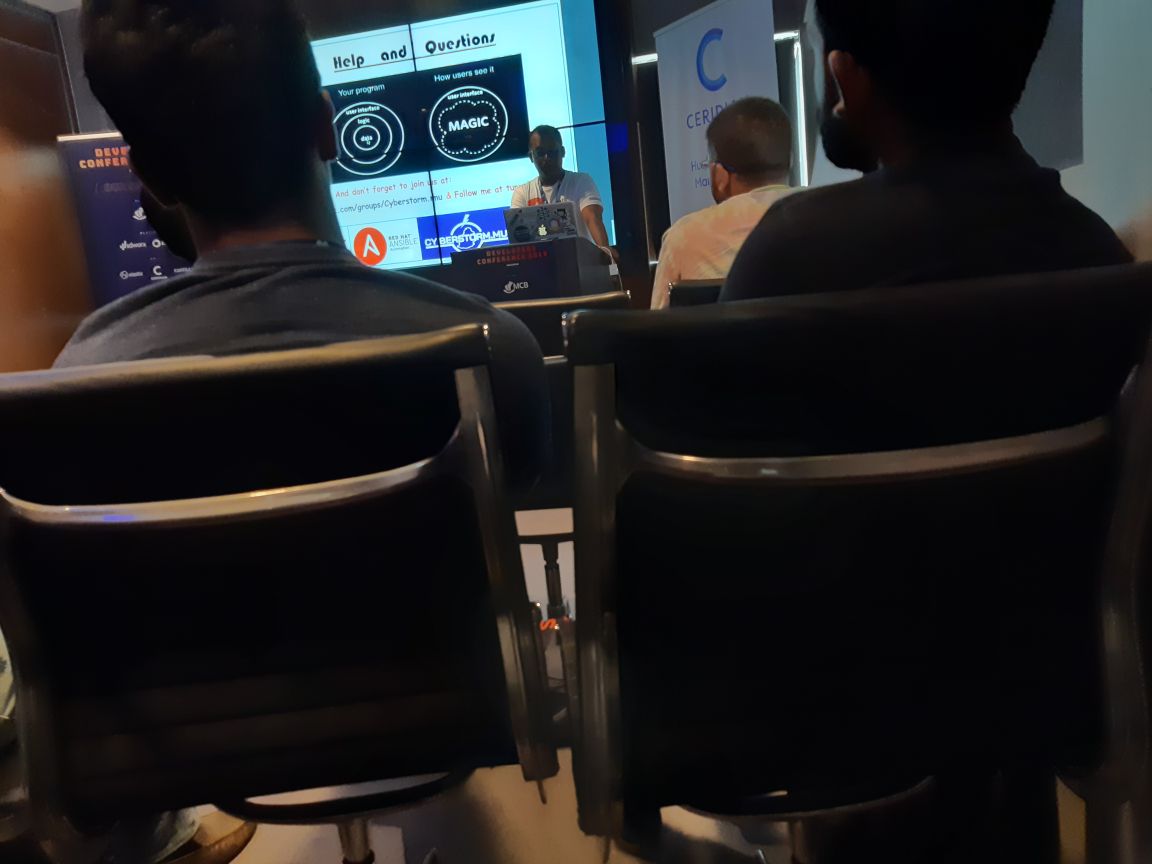
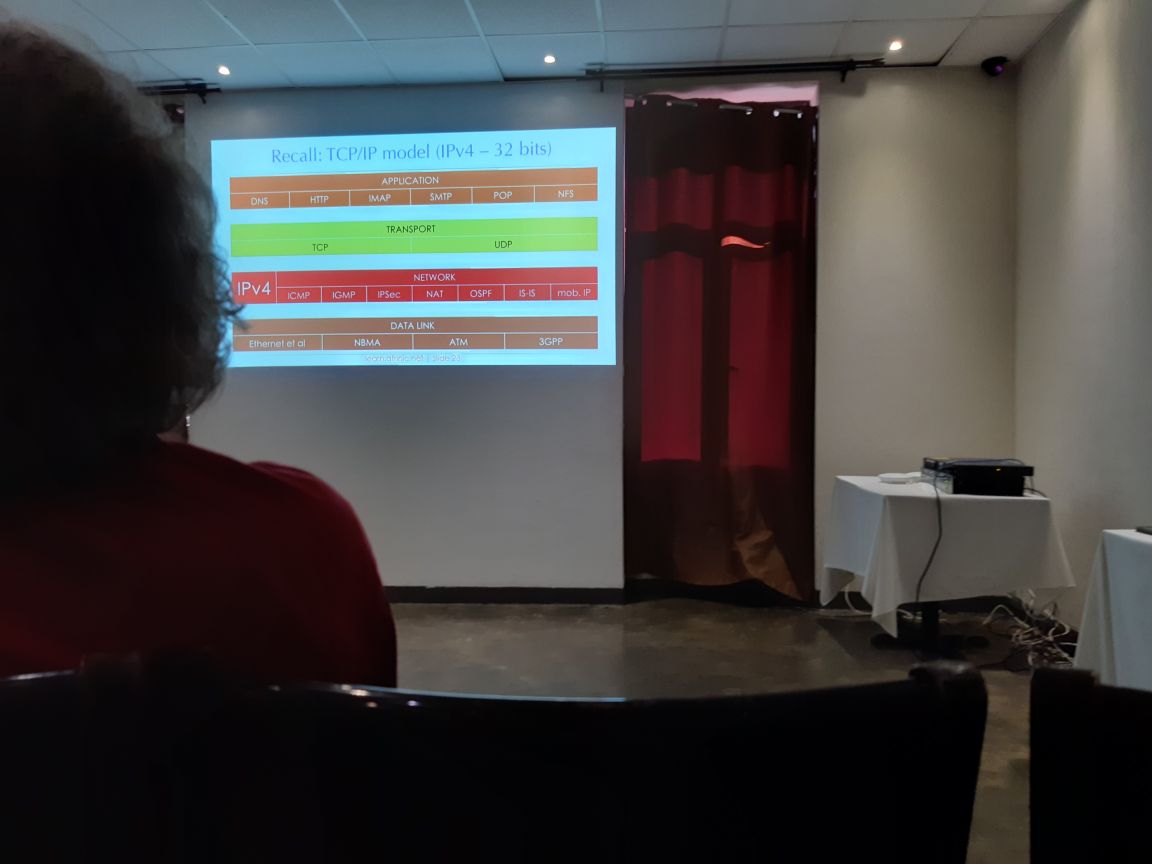
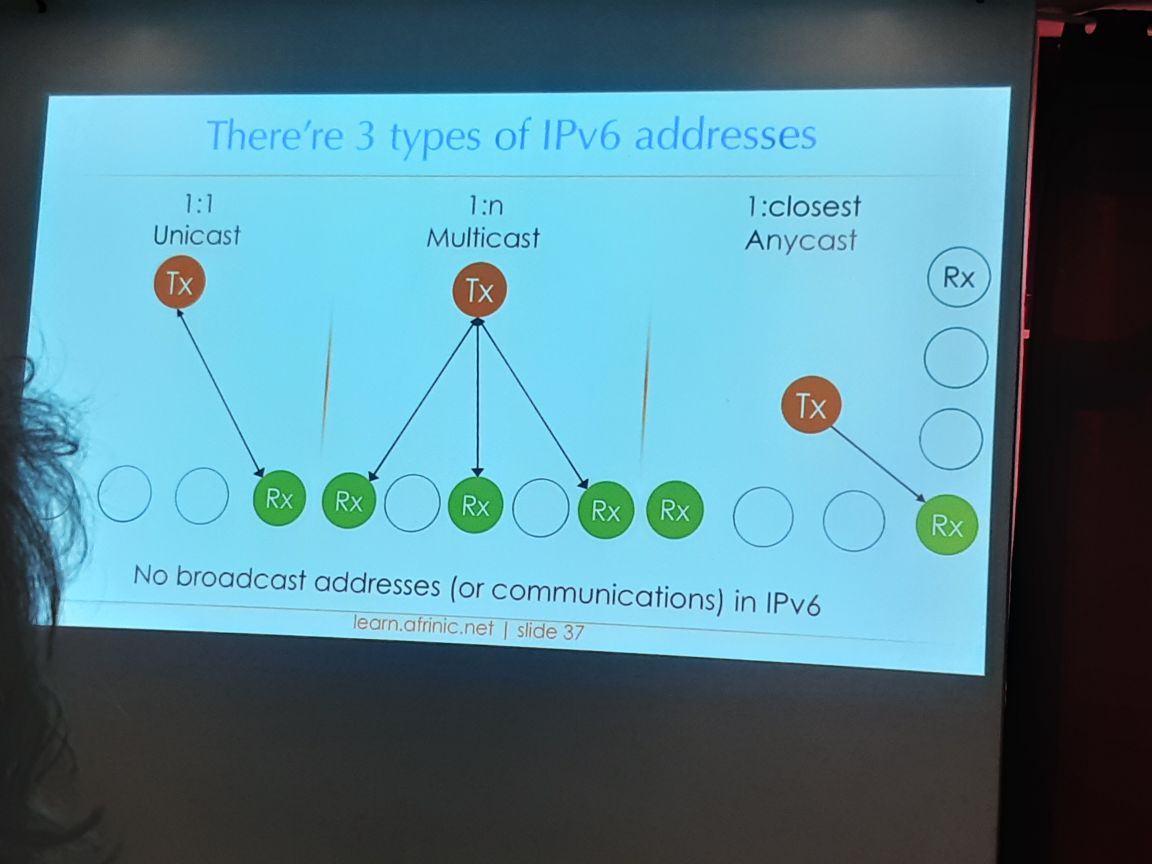

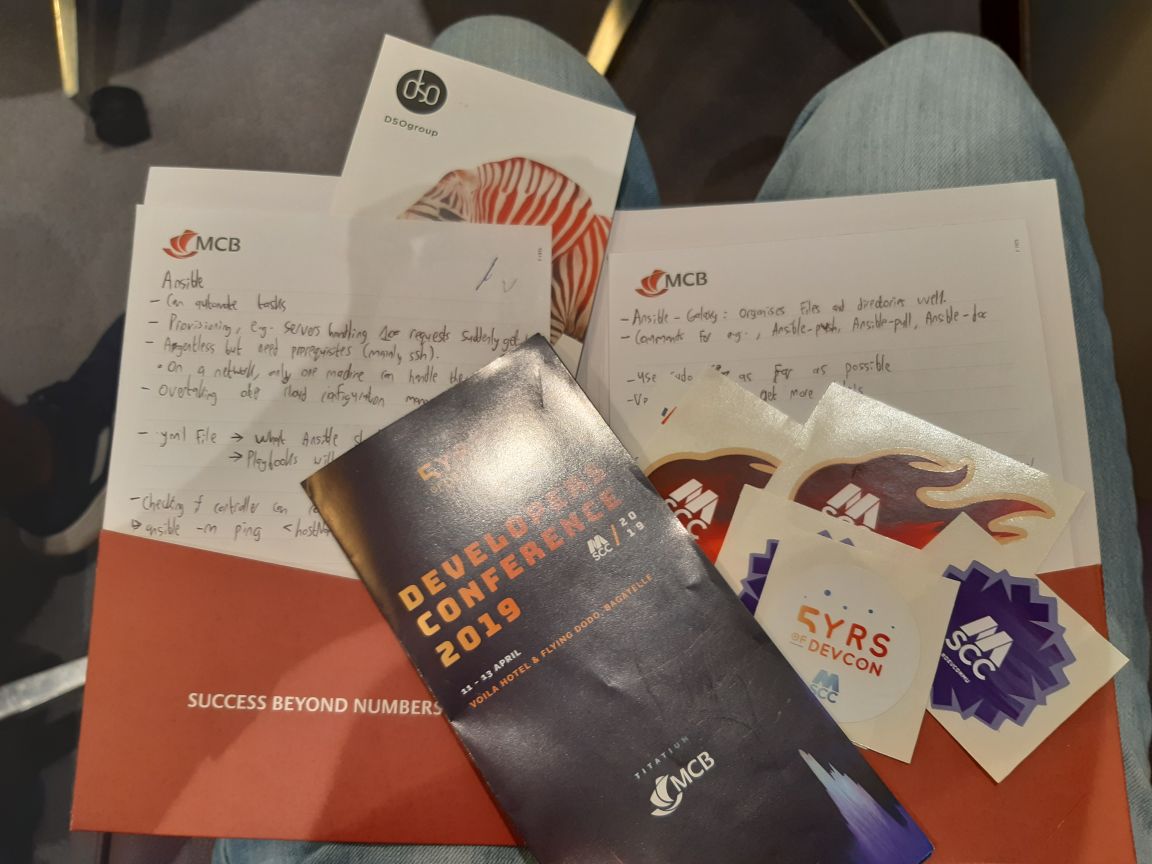


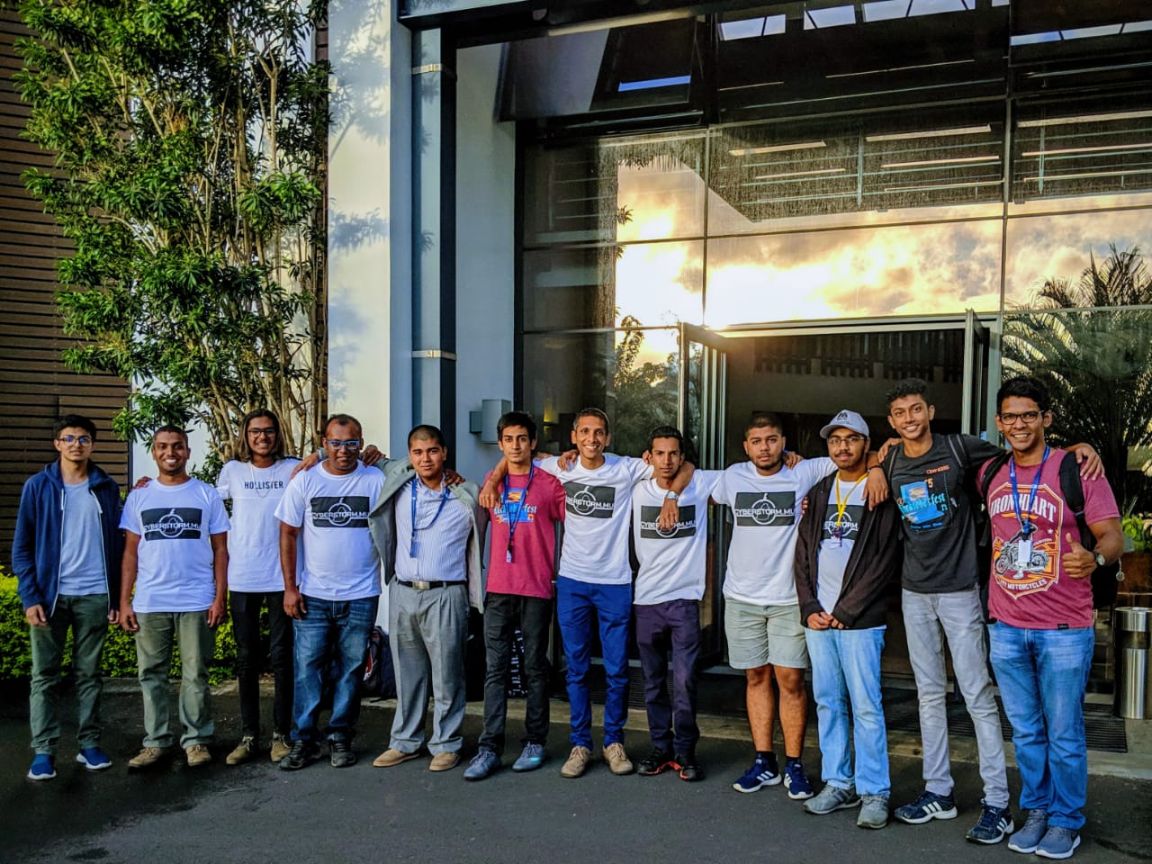
This was the first devcon I attended. I had applied for a session where I would’ve made a video game from scratch in under 1 hour live but sadly, it was declined. I only went for some hours for the last 2 days of the event in the afternoon. Myself being in an ever growing team of developers, I met my peers first when I reached and stayed with them. I chatted, laughed and ate a lot. During these days of devcon, 4 of my peers had their sessions.
On day 1, one of my peers had a session on Ansible. Ansible itself is an open-source software provisioning, configuration management, and application deployment tool. We learnt how tasks across servers can be automated using Ansible and the benefits of using it. For example, if there were servers handling x requests usually, if they suddenly got 10x requests, Ansible could help to determine how these should be properly handled. We also learnt how this tool was becoming more popular. As it was agentless, only one machine could have it to perform tasks on other machines, provided prerequisites are available such as ssh. Playbooks, which are basically .yml files consisting of commands that Ansible should run and actually commands that Ansible can run were also explained (ping, push, pull, doc). Terminologies such as tasks, modules, handlers, variables, templates, groups and vault were explained along with a live demo of using virtual machines. There were also a brief talk about Ansible-Galaxy, which basically organises files/directories and we were given tips such as using the verbose and superuser modes as far as possible.
I then went to another session talking about IPv6. Basically, all devices over the Internet have a unique IP address to send and receive data. The current version (IPv4) will soon run out of IP addresses to allocate to each device due to the growing number of devices on the Internet. A member of the Afrinic, the regional Internet registry for Africa led the talk by introducing the benefits of adopting IPv6. IPv6 can allocate approximately 340 undecillion IP addresses to devices over the Internet, eliminating the need to allocate the same IP address to a device when the one having had it goes offline. IPv6 achieves this by using 128 bits and a hexadecimal style instead of its predecessor which used 32 bits and a binary style. He also talked about how developers should use IPv6 as default and fallback to IPv4 if unavailable using the Apple App store which forces developers implementing network services as an example. He then talked about Unicast, Multicast and Anycast when connections had to be made in IPv6 using great examples. More things out of my comprehension were discussed too.
There was only one talk left for the day from another one of my peers. He talked about nftables. Nftables is a subsystem of the Linux kernel providing filtering and classification of network packets/datagrams/frames. It can be used to filter and analyse connections. We were continuously using the example of setupping a firewall. Using nftables, we can determine connections to which website need to be allowed based on packets sent and received. It is way easier to use nftables to define these rules than using iptables which for example would have necessitated to be adapted for IPv4 and IPv6. It was quite complicated to comprehend though.
On Day 2, I only came to attend one session by yet another one of my peers. I was taken up half of the day and I didn’t find the remaining ones interesting enough. He talked about the STM32 which is a family of 32 bit ARM-based microcontrollers. He explained the benefits of using them due to their low cost and the differences between the real and counterfeit ones. He then proceeded to show up a live demo of how easy it is to get program templates on the Internet for a wide variety of microcontrollers as well as compiling them, before flashing them on his board. He demonstrated a “Hello World” program using blinking leds and then on a display. He then showed us the specs sheets for some microcontrollers and some of the things that they can do before finally giving everybody who attended his session a PCB with a led that lights on as soon as it is plugged in a USB port.